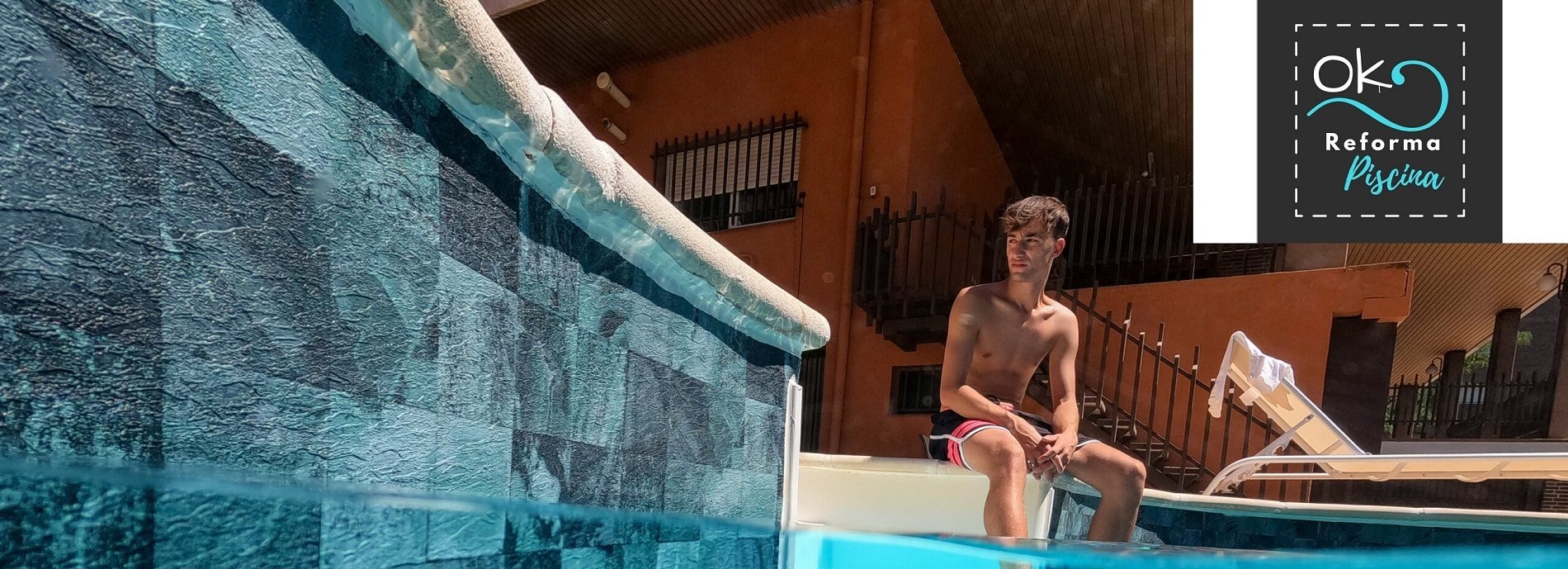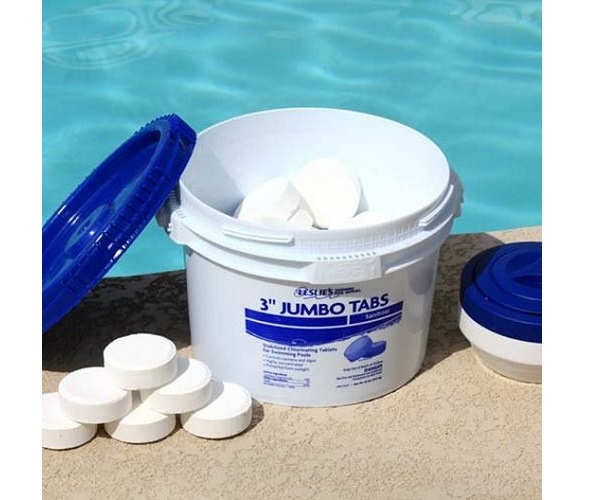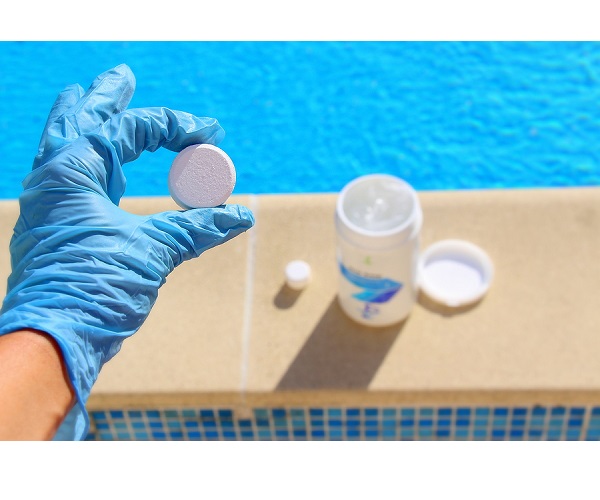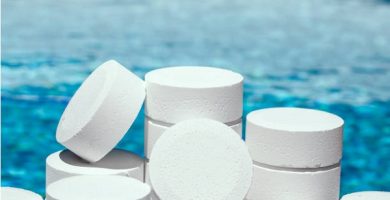
Table of contents of the page
En Ok Pool Reform within Swimming pool water treatment We present the section for Know all the Secrets of pool chlorine disinfection.
What is pool chlorine and what is it for?

Chlorine is a naturally occurring chemical element and one of the basic components of matter.
How is chlorine in the pool produced?
Chlorine is produced from common salt by passing an electrical current through a brine solution (common salt dissolved in water) in a process called electrolysis.
Why should we add chlorine to swimming pools?
Chlorine is added to water to kill germs, and this forms a weak acid called hypochlorous acid that kills bacteria (such as salmonella and as well as germs that cause viruses such as diarrhea and swimmer's ear).
Although, chlorine is not the only possibility in the pool water treatment (click and discover the alternatives to chlorine!).
Chlorine is the most used disinfectant chemical element in the pool
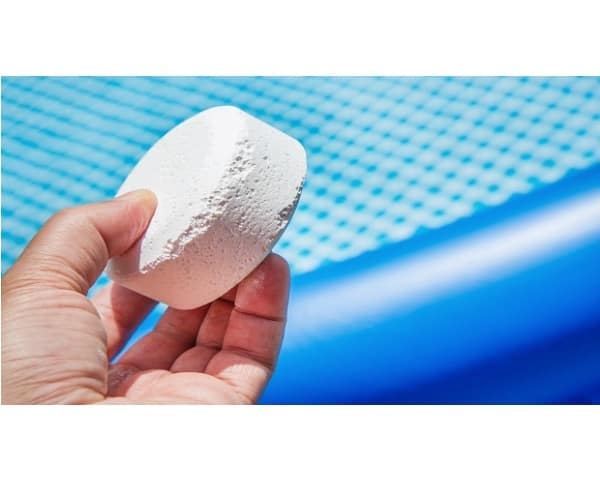
Chlorine is the most popular pool disinfectant
Chlorine (Cl) is one of the most common chemical elements used to eliminate microorganisms that can infect our water.
Chlorinated products are the substances most frequently used in chemical water treatment.
Different forms of Chlorine in water The objective of disinfection is to eliminate pathogenic microorganisms and guarantee the absence of any infectious germ (bacteria or virus) in the water. Chlorinated products are the substances most frequently used in the chemical treatment of water thanks to their safety and ease of controlling their levels.
As you may already know, chlorine is the most popular pool disinfectant, but there are many other disinfection methods currently in the industry that you can also use to keep your pool clean.
How to add chlorine to the pool
Chlorine is regularly introduced into pool water and should be tested daily, at a minimum, for proper disinfection. Routine chlorination kills harmful microorganisms that can cause health-related problems such as gastroenteritis, Legionnaires' disease, ear infections, and athlete's foot. Learning how to properly test your water will allow you to identify residual chlorine and demand in your pool water. More frequent testing is needed if there is heavy bather use.
Listed below are some useful definitions to help you understand the terms and tasks of applying chlorine-based disinfectants.
Reaction of chlorine in pool water

Transformation that chlorine undergoes in pool water
Chlorine as soon as it comes into contact with pool water is transformed into sodium hypochlorite ions, which break down when hit by ultraviolet (UVA) rays.
When chlorine evaporates, very little free chlorine remains in the water.
The chlorine portion evaporates, leaving very little free chlorine in your pool water. In fact, Within 17 minutes of UV exposure, half of your free chlorine will be gone.
Importance of cyanuric acid in combination with chlorine to destroy bacteria
Additionally, for chlorine to destroy contaminants for the same amount of time without CYA, you would need up to eight times more chlorine than if you added CYA.
Then you have the page intended for Cyanuric Acid Pool, a vital factor for the maintenance of pool water and for savings in chemical products. Likewise, in the entry we also answer: What role does cyanuric acid play with chlorine?
Chlorine residue
Once added to water, any type of chlorine will form hypochlorous acid (HOCl). Hypochlorous acid constantly dissociates, that is, it decomposes into hypochlorite ions (OCl-) and hydrogen ions (H+) and then reforms into hypochlorous acid again. Together, HOCl and OCl form free chlorine, the chemical species that destroys microorganisms and oxidizes organic substances. However, HOCl is a much more powerful disinfectant than OCl-. The effectiveness of free chlorine as a disinfectant/oxidant depends solely on pH. At the lower end of the acceptable pH range of 7,2, almost 67% of the free chlorine is in the form of HOCl. At level 7.8, it drops to almost 33%. At pH 7,5, HOCl is 50%.
When free chlorine reacts with sweat, urine, and other ammonia and organic nitrogen compounds introduced into the spa, it forms foul-smelling compounds that irritate the eyes and throat, known as chloramines or combined chlorine. Chloramines are detectable to bathers at levels as low as 0.2 ppm and must be removed by superchlorination to the "break point" when they reach 0.5 ppm or sooner. If the spa is equipped with an ozonator, the chloramines will be destroyed while it is operating. Note: Potassium monopersulfate shocks are not very effective at removing chloramines, but they help prevent their formation.
Recommended chlorine levels and different ways to find it in water treatment
Level of the different values of chlorine in swimming pools
Chlorine level in swimming pools There are different values, the most common is the free chlorine value, then we have the total and combined chlorine.
Correct salt water pool values
Ideal levels in the saltwater pool
- pH: 7,2-7,6
- Total chlorine value: 1,5ppm.
- Free chlorine value: 1,0-2,0ppm
- Residual or combined chlorine: 0-0,2ppm
- Ideal pool ORP value (pool redox): 650mv -750mv.
- Cyanuric acid: 0-75ppm
- Pool water hardness: 150-250ppm
- Alkalinity of pool water 125-150ppm
- Pool turbidity (-1.0),
- Pool phosphates (-100 ppb)
